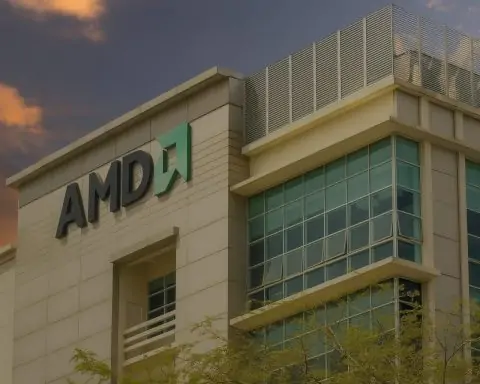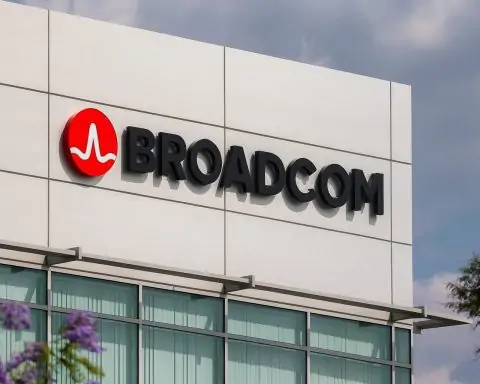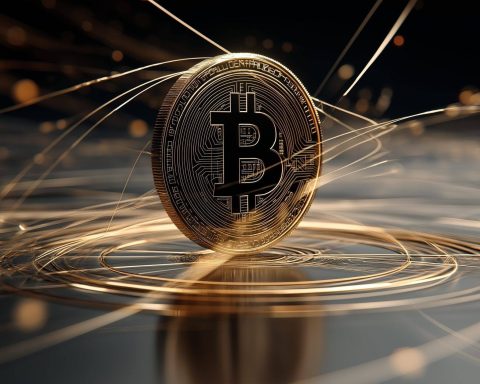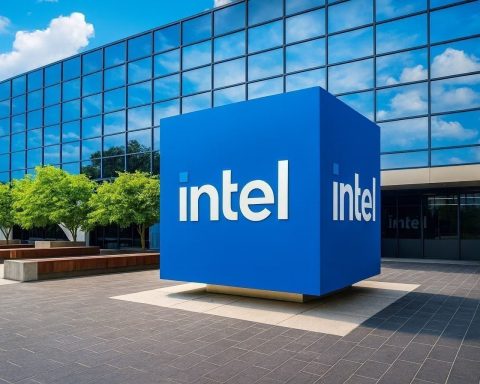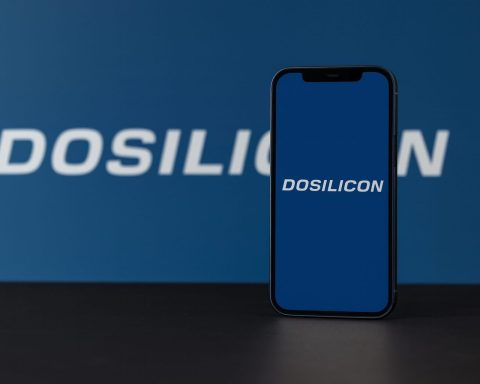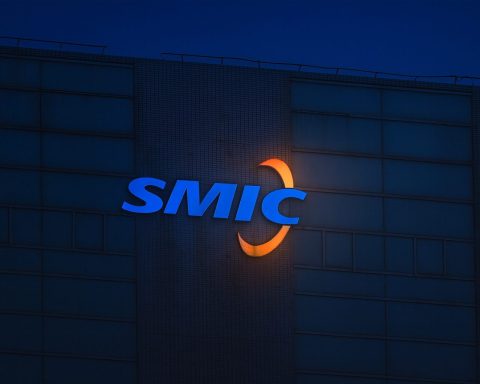- SK Hynix plans to double its sales of high-bandwidth memory chips this year to meet surging AI demand and will boost CAPEX, especially for HBM production.
- Intel’s new CEO Lip-Bu Tan is shifting from the 18A process to the 14A process to make Intel Foundry Services more competitive and catch up to TSMC.
- Nvidia’s high-end H20 AI chips sales to China were allowed to resume by the U.S. government, a win that bolsters demand for TSMC’s most advanced manufacturing lines.
- SK Hynix posted a record Q2 with operating income up 69% to ₩9.2 trillion ($6.7 billion) and revenue up 35% year-on-year to ₩22.2 trillion, driven by AI-related memory demand.
- SK Hynix overtook Samsung as the world’s top memory chipmaker thanks to HBM leadership, with supply agreements through 2026 with a key customer believed to be Nvidia.
- Texas Instruments reported Q2 sales of $4.45 billion but gave a weaker-than-expected outlook for Q3 as tariffs and geopolitics disrupt demand.
- Intel is expected to post its sixth consecutive quarterly net loss in Q2, with revenue around $11.9 billion, as Lip-Bu Tan restructures and contemplates one-time charges from moving from 18A to 14A.
- Sony Group is exploring a sale of its Sony Semiconductor Israel unit (Altair) that makes 4G/5G modem chips, generating about $80 million in annual revenue and potentially fetching around $300 million.
- Intel and TSMC have discussed a joint venture in which TSMC would operate Intel’s U.S. chip plants, with a potential 20% stake to shore up Intel’s foundry business.
- On July 23–24, 2025, the United States and allies advanced export-control measures in an AI Action Plan, including location verification for high-end AI chips and Dutch licensing rules for ASML shipments, amid tariff talks and EU relief discussions.
Product Announcements & Innovations
AI Chips and Memory Leap Forward: The semiconductor news cycle was dominated by advancements in artificial intelligence hardware. SK Hynix – a key memory supplier to Nvidia – revealed it is on track to double its sales of high-bandwidth memory (HBM) chips this year to meet surging AI demand [1] [2]. Buoyed by “strong demand for artificial intelligence chips and customers stockpiling ahead of potential U.S. tariffs,” SK Hynix announced plans to boost capital spending on cutting-edge chip equipment, especially for HBM production [3] [4]. Company executives said major clients are launching new AI models that will drive even greater need for advanced memory, prompting preemptive investments to secure future supply [5]. Industry analysts viewed the spending hike as a bold bet on technology: “Today’s announcement on boosting this year’s CAPEX appears to reflect SK Hynix’s confidence,” noted Ryu Young-ho of NH Investment & Securities [6].
Chipmakers Embrace Next-Gen Nodes: In logic chips, Intel’s new CEO Lip-Bu Tan is refocusing the company’s strategy around an upcoming “14A” fabrication process, shifting away from the 18A process that former leadership had poured billions into [7]. The goal is to make Intel’s foundry unit more competitive for external customers and catch up to Taiwan’s TSMC. Analysts at Stifel wrote that Tan’s long-term vision for the 14A node “will hold more weight this earnings call than anything else” as investors assess whether Intel can close the technology gap with TSMC [8]. Meanwhile, TSMC itself is forging ahead with ever-smaller transistor technology. The Taiwanese giant notched a recent win when one of its top clients, Nvidia, was allowed by the U.S. government to resume sales of its high-end H20 AI chips to China [9]. “China is a big market, and my customer can continue to supply the chip… it’s very positive news for TSMC,” TSMC CEO C.C. Wei said, noting the decision boosts demand for TSMC’s most advanced manufacturing lines [10] [11].
Financial Results & Earnings Highlights
Record Profits Amid AI Boom: The earnings season underscored a widening gulf in the chip sector. SK Hynix posted a record quarterly profit in Q2, with operating income surging 69% to ₩9.2 trillion ($6.7 billion) [12]. Revenue jumped 35% year-on-year to an all-time high ₩22.2 trillion [13], handily beating forecasts as orders for AI-related memory chips exploded. The South Korean firm credited the “strength of AI demand” for its blowout results and rosy outlook [14]. In fact, SK Hynix has now overtaken rival Samsung as the world’s top memory chipmaker, thanks to its leadership in HBM chips – a critical component in Nvidia-class AI systems [15]. Notably, Samsung Electronics had warned that its own second-quarter profit would plunge 56%, citing weaker sales of AI chips [16]. By contrast, SK Hynix is thriving: its HBM dominance helped deliver five consecutive quarters of double-digit growth [17]. The company even secured supply agreements through 2026 with a “key customer” (widely understood to be Nvidia) to ensure sustained HBM demand [18] [19].
Mixed Signals from Chipmakers: While the AI frenzy lifted some chipmakers to new heights, others offered cautious forecasts. Texas Instruments (TI) – a bellwether for analog chips used in cars and industry – reported better-than-expected Q2 sales of $4.45 billion but struck a “weaker-than-expected” tone for the current quarter [20]. TI’s profit outlook for Q3 (EPS $1.36–$1.60) came in at a midpoint below analyst consensus [21], and executives flagged softening demand and tariff uncertainty in certain segments. “Tariffs and geopolitics are disrupting and reshaping global supply chains,” TI CEO Haviv Ilan warned on the earnings call, noting that an anticipated automotive-chip recovery has been “shallow” so far [22]. He acknowledged that some customers likely pulled forward orders into Q2 – effectively stockpiling chips in case U.S. trade policies worsen – which bolstered the recent sales but clouds future demand [23] [24]. Investors reacted swiftly: TI’s stock plunged 11% in after-hours trading, its steepest one-day drop in 17 years, as the modest outlook and cautious tone spooked the market [25] [26]. Analysts noted the sharp change in stance from just a quarter ago – “Management voiced caution as they saw some normalization of orders… a shift from the significant rebound they touted previously,” observed Summit Insights’ Kinngai Chan [27].
Intel’s Ongoing Turnaround: All eyes were also on Intel, which was set to report results on July 24. The storied CPU maker remains in a slump, with Q2 expected to mark a sixth consecutive net loss [28]. Revenue was forecast to drop ~7% year-on-year to about $11.9 billion [29], extending Intel’s streak of top-line declines. New CEO Lip-Bu Tan has been aggressively restructuring to stem the bleeding. Since taking over in March, Tan has shed non-core units – in April Intel sold a 51% stake in its Altera FPGA division for $4.46 billion [30] – and is contemplating further divestitures of its networking and edge businesses [31]. Intel’s foundry division (contract manufacturing for others) remains a major swing factor. The unit likely contributed ~$4.5 billion in Q2 revenue, though most of that was internal production for Intel itself [32]. To truly turn around, the foundry must attract big external customers; however, that effort may entail painful writedowns. Pivoting from the previous 18A process to Tan’s preferred 14A technology could lead to “hundreds of millions, if not billions” in one-time charges, analysts cautioned [33] [34]. Still, there were a few glimmers: Intel’s data-center chip segment is finally stabilizing – Q2 data-center sales are expected to jump ~20% (to $3.66 billion) after several weak quarters [35] [36]. This suggests enterprise demand for traditional server processors is rebounding, even as Intel faces fierce competition from AMD and Nvidia in AI accelerators [37] [38].
Mergers, Acquisitions & Partnerships
Sony Shops Its Chip Unit: In a strategic portfolio shakeup, Sony Group is exploring the sale of its cellular chipset business in Israel [39]. The unit – formerly Altair Semiconductor – produces 4G/5G modem chips for wearables, smart appliances and other connected devices. According to insiders, Sony has hired investment bankers to find a buyer for “Sony Semiconductor Israel,” which generates about $80 million in annual revenue and could fetch roughly $300 million in a deal [40] [41]. The move aligns with Sony’s broader pivot away from industrial tech and toward its entertainment empire of gaming, music and movies (which contributed over 60% of its profit last year) [42]. Sony acquired the Altair wireless chip business in 2016 for $212 million, but now believes it can better focus on strengths like image sensors while letting go of niche B2B chip operations. The Japanese conglomerate is simultaneously preparing a partial spinoff and public listing of its financial services arm, underscoring management’s focus on unlocking value through reorganization [43] [44]. Potential buyers for the IoT-chip unit include both financial sponsors and industry peers, sources say, as connectivity silicon remains in demand [45].
Streamlining and Alliances: Across the industry, companies are restructuring and seeking partners to gain an edge. Intel’s new leadership has made it clear that “nothing is sacred” in its turnaround plan. In addition to the Altera sale, Tan has flattened management layers and hinted at further job cuts or asset sales if needed [46] [47]. One dramatic proposal under discussion: a partnership with TSMC to help run Intel’s factories. Reuters reported that Intel and TSMC have discussed a joint venture in which TSMC would operate Intel’s U.S. chip plants, with TSMC potentially taking a 20% stake [48] [49]. Such talks, encouraged by U.S. officials, aim to rescue Intel’s lagging manufacturing operation by leveraging TSMC’s expertise. (Notably, TSMC had also pitched the joint-venture idea to Nvidia, AMD and Broadcom earlier in the year, seeking additional investors to shore up Intel’s foundry unit at Washington’s urging [50] [51].) While no deal is finalized, the discussions underscore unprecedented collaboration in an industry where “coopetition” is becoming the norm. Chipmakers are also eyeing emerging markets: for instance, U.S. semiconductor firms have been partnering in India’s nascent chip ecosystem, and auto chip suppliers like Qualcomm have inked partnerships with car electronics makers to develop smart vehicle cockpits (as announced in India on July 24). These alliances and divestitures highlight how semiconductor players are refocusing their portfolios and joining forces to navigate both technological transitions and geopolitical headwinds.
Geopolitical & Regulatory Moves
Washington’s AI Export Clampdown: The U.S. government rolled out major policy initiatives aimed at safeguarding its lead in cutting-edge chips. On July 23, the Trump administration unveiled a comprehensive “AI Action Plan”, a 28-page blueprint of measures to cement U.S. dominance in artificial intelligence [52] [53]. A centerpiece of the plan is a recommendation to tighten export controls on advanced AI chips: vendors like Nvidia and AMD would have to implement “location verification” features on high-end processors to ensure they don’t end up in countries of concern [54] [55]. In other words, chips powering AI systems should report their whereabouts – an effort to prevent clandestine exports to China and other U.S.-designated adversaries. “I was encouraged to see that…export control policy includes location verification mechanisms and aligns closely with our bipartisan Chip Security Act,” said Rep. Bill Foster (D-IL), who has championed legislation to track chips after sale [56]. Republican Senator Tom Cotton’s office likewise praised the move as “an important tool to keep advanced American technology out of the hands of Communist China.” [57]
Beyond tracking chips, the White House plan seeks to boost U.S. AI infrastructure and exports. It calls for loosening environmental and permitting rules to speed up construction of data centers (viewed as critical “AI infrastructure”) and for aggressively exporting U.S.-made AI hardware and software to allies [58] [59]. By making American AI platforms the global standard, the U.S. hopes to crowd out Chinese tech influence. At the same time, the plan doubles down on denying China access to top-tier AI semiconductors – a continued “high fence” approach on export controls [60]. Officials are also looking to plug loopholes in chipmaking equipment exports: a new rule effective Sept. 1 in the Netherlands now requires Dutch firms (like ASML) to get licenses before shipping certain advanced lithography tools, aligning with U.S. pressure to curb China’s chip fabrication capabilities [61] [62]. The U.S. Commerce Department, per the AI Action Plan, is tasked with “developing new export controls on semiconductor manufacturing sub-systems,” since current curbs cover big machines but not all the components inside them [63] [64]. This coordinated tightening by the U.S., Netherlands, and Japan has drawn an angry response from Beijing – China’s Embassy in the Netherlands slammed the Dutch measures as an “abuse of export control” that violate free-trade rules [65] [66].
Tariff Turbulence and Trade Talks: Geopolitics continue to cut both ways for the chip sector. Earlier this month, U.S. President Donald Trump threatened new tariffs on semiconductors, part of an aggressive trade stance that has kept industry leaders on edge [67]. In response, some chip customers rushed to build inventory – SK Hynix noted its Q2 sales got a boost from clients “increasing inventory ahead of potential tariffs,” even as many global companies are warning that tariff chaos is hurting earnings [68] [69]. The uncertainty over U.S.–China trade has become a persistent theme in earnings calls: ASML, the world’s top chip equipment maker, warned that if tariff talks remain unresolved it “might not achieve revenue growth in 2026” due to delayed orders [70]. TSMC similarly said it is “being conservative” with its outlook to account for possible tariff disruptions later this year [71]. Notably, TSMC expects a very strong third quarter (sales jumping as much as 40% QoQ) thanks to AI demand, but CEO C.C. Wei cautioned that “momentum for fourth-quarter earnings could be different” if tariffs hit and customer behavior changes [72] [73]. “We are taking into consideration the possible impact of tariffs and… becoming more conservative,” Wei explained, even though TSMC hasn’t yet seen orders drop off [74].
Meanwhile, global trade negotiations are in flux. Hopes for a U.S.–South Korea tariff compromise were raised and dashed within days. A much-anticipated trade meeting set for July 24 in Seoul was abruptly cancelled, right after the U.S. reached a deal with Japan on tariffs [75]. (South Korean officials had been seeking an exemption from Trump’s proposed semiconductor tariffs, which threaten its exporters.) On a more positive note, EU diplomats indicated that Washington and Brussels are nearing a deal to avert broader tariff escalation, potentially instituting a modest 15% tariff regime to replace the array of higher duties [76]. Any de-escalation of trade wars would be a relief for chipmakers, many of whom operate global supply chains and have seen their stock prices whipsawed by each new tariff headline. For now, the industry is bracing for uncertainty – and even contingency plans like “tariff-proof” inventory buildups – until concrete trade agreements are in place.
Market Trends & Investment Analysis
AI Gold Rush Powers Chip Rally: The promise of artificial intelligence is acting as a tidal force in markets, lifting the entire semiconductor sector. The Philadelphia Semiconductor Index is up about 13% year-to-date [77], outperforming broader indices, thanks largely to excitement around AI chips. The most stunning example is Nvidia, whose shares have more than tripled over the past year. In fact, earlier this month Nvidia briefly became the first company in history to reach a $4 trillion market capitalization, underscoring how feverish investor appetite has become for AI-exposed chip stocks [78] [79]. (For context, Nvidia was a $1 trillion company just in mid-2023; its meteoric rise reflects how crucial its GPUs are to AI infrastructure worldwide.) Other AI chip specialists – from startups to incumbents like AMD – have similarly seen valuations soar on expectations for years of growth supplying data centers with accelerators.
However, this “AI bubble” optimism is meeting a reality check as companies report results. Texas Instruments’ slide of over 11% in one day, despite no catastrophic miss, revealed how skittish investors have become regarding any hint of slowing demand [80] [81]. Notably, TI’s drop was its worst single-day loss since 2008, wiping out much of its year-to-date gains. The episode served as a reminder that beyond the headline-grabbing AI players, many chip firms face cyclical slowdowns in areas like automotive and industrial electronics. A Reuters analysis piece observed that the recent AI boom “is infrastructure masquerading as software,” meaning it will require massive continual investment in hardware – expensive chips, servers, and power – not just clever code [82] [83]. Every ChatGPT query “spins up thousands of chips, consuming power… This looks less like software and more like a utility,” journalist Sebastian Pellejero noted, arguing that AI’s economics differ from the low-cost, high-margin model of traditional software [84]. This perspective suggests that while AI-driven demand could keep semiconductor revenues growing, it may also pressure companies (and their investors) to fund huge capital outlays in fabs, memory and networking to support that demand.
Investor Caution Amid Trade and Supply Shifts: Market watchers are also parsing developments in the global supply chain for long-term implications. The flurry of mergers and reshoring initiatives – from Intel’s U.S. fab investments (bolstered by CHIPS Act subsidies) to Tata Group’s semiconductor forays in India – indicates that production is slowly diversifying geographically. That could mitigate some supply bottlenecks (and geopolitical risks) in the future, but in the near term it means hefty capital expenditures. Memory prices and inventories are another focal point: after a long downturn, signs point to recovery in 2025, led by AI-related consumption. SK Hynix’s stock has surged nearly 55% in Seoul this year [85], far outpacing the overall market, as investors bet on an HBM memory boom. Yet there are warnings on the horizon – just last week Goldman Sachs downgraded SK Hynix to neutral, predicting HBM prices may begin to decline in 2026 as supply catches up [86]. Similarly, chip equipment makers like ASML have seen strong orders for current tech generations but worry that trade restrictions (and the eventual saturation of AI capacity) could slow growth a year or two out [87].
Overall, the investment climate around semiconductors is optimistic but volatile. Enormous government support (e.g. U.S. and EU chip subsidies) and secular demand drivers (AI, 5G, cloud, automotive electrification) are bullish factors that did not exist in past cycles. But at the same time, rising interest rates and geopolitical fractures are introducing new volatility. As one stark example, Trump’s on-again off-again tariff threats have led to “chaotic” swings in ordering patterns [88] – a dynamic that could whipsaw quarterly results if companies over-stockpile chips and then abruptly cut orders. Investors are thus torn between fear of missing out on the next Nvidia and fear of getting caught in the downdraft of an over-hyped cycle. Many analysts counsel selectivity: focus on companies with real technological moats or strategic importance, and be wary of those serving more commoditized end-markets. In other words, the markets are rewarding the “arms dealers” of the AI revolution – high-end logic and memory suppliers – but turning skeptical toward chipmakers whose outlook is muddied by trade wars or plateauing demand.
Expert Commentary & Outlook
Industry experts and observers offered nuanced takes on the developments of these two days. Corporate leaders struck a balance between enthusiasm and caution. After TSMC’s record profit report, CEO C.C. Wei stressed that demand for AI is “getting stronger and stronger,” even as he prepares for possible turbulence from tariffs and currency swings [89] [90]. “We are becoming more conservative,” Wei admitted regarding TSMC’s outlook into year-end, noting it’s prudent to plan for potential trade disruptions [91]. At SK Hynix, executives were more upbeat – buoyed by outsized earnings – but still acknowledged challenges. CFO Kim Woo-hyun said on an investor call that 2025 capital spending will rise more than initially planned, focused on HBM manufacturing equipment, to “preemptively invest” for expected demand [92]. This reflects confidence that the AI trend is real and here to stay. As NH Investment’s Ryu Young-ho observed, SK Hynix likely wouldn’t ramp up spending unless it believed it could stay ahead of rivals like Samsung in the memory arms race [93]. “Today’s announcement…appears to reflect SK Hynix’s confidence,” Ryu said of the company’s CAPEX boost [94].
Analysts and lawmakers, for their part, focused on strategic risks. The looming U.S. export controls drew bipartisan praise in Washington but also raised questions. “Location verification…aligns closely with our Chip Security Act,” noted Rep. Bill Foster, highlighting the broad support for measures to track where advanced chips end up [95]. Yet implementing such controls won’t be simple – even officials behind the plan admit “key details…remain to be worked out” regarding how these tracking features would technically function and what costs they impose [96] [97]. On the corporate strategy side, analysts are divided about Intel’s drastic foundry pivot. Some, like those at Stifel, see it as necessary tough love – writing off sunk costs in 18A and moving to a potentially more viable 14A process [98] [99] – while others worry about the financial hit. “Writedowns could [be] hundreds of millions, if not billions,” one research note warned, emphasizing that such charges would “surely displease investors” even if done for the greater good of Intel’s competitiveness [100] [101].
Looking ahead, veteran market strategists are advising close attention to geopolitics. Tariffs and tech bans have essentially become an unpredictable variable in chip company earnings. “When you see such a strong [order] behavior in Q2 vs Q1, you have to attribute some of it to the tariff environment,” TI’s Ilan told analysts, essentially conceding that trade policy is now shaping demand patterns [102] [103]. If a U.S.–Europe tariff détente is reached in coming weeks, it could remove some uncertainty; on the other hand, any collapse in negotiations or new sanctions on China could rapidly dent confidence again. As Ma Jihua, a Chinese industry expert, told the Global Times, the U.S. and China are locked in a long-term “technology race,” and Washington’s latest AI plan shows a continued resolve to “restrict China’s AI advancement and maintain [U.S.] dominance” in semiconductors [104] [105]. That dynamic all but guarantees that semiconductor strategy will remain at the heart of global economic and security debates.
In summary, the 48 hours of July 23–24 brought a cascade of chip industry news: blockbuster profits driven by AI hype, warning signs in more traditional segments, notable corporate restructuring moves, and major government interventions in the tech supply chain. The whirlwind reflects a sector at an inflection point. A new growth engine (AI) is revving up just as old engines (smartphones, PCs) idle, and companies are reorienting accordingly. But the road ahead is complicated by trade politics and the sheer capital requirements of staying on the cutting edge. As the dust settles, one thing is clear: the global semiconductor industry is experiencing profound change, and these two days’ developments will shape debates about where the industry – and the balance of tech power – goes from here.
Sources: Official company reports and releases; Reuters, July 23–24, 2025 [106] [107] [108] [109] (and additional sources inline).
References
1. www.reuters.com, 2. www.reuters.com, 3. www.reuters.com, 4. www.reuters.com, 5. www.reuters.com, 6. www.reuters.com, 7. www.reuters.com, 8. www.reuters.com, 9. www.reuters.com, 10. www.reuters.com, 11. www.reuters.com, 12. www.reuters.com, 13. www.reuters.com, 14. www.reuters.com, 15. www.reuters.com, 16. www.reuters.com, 17. www.reuters.com, 18. www.reuters.com, 19. www.reuters.com, 20. www.reuters.com, 21. www.reuters.com, 22. www.reuters.com, 23. www.reuters.com, 24. www.reuters.com, 25. www.reuters.com, 26. www.reuters.com, 27. www.reuters.com, 28. www.reuters.com, 29. www.reuters.com, 30. www.reuters.com, 31. www.reuters.com, 32. www.reuters.com, 33. www.reuters.com, 34. www.reuters.com, 35. www.reuters.com, 36. www.reuters.com, 37. www.reuters.com, 38. www.reuters.com, 39. www.reuters.com, 40. www.reuters.com, 41. www.reuters.com, 42. www.reuters.com, 43. www.reuters.com, 44. www.reuters.com, 45. www.reuters.com, 46. www.reuters.com, 47. www.reuters.com, 48. www.reuters.com, 49. www.reuters.com, 50. www.reuters.com, 51. www.reuters.com, 52. www.globaltimes.cn, 53. www.globaltimes.cn, 54. www.reuters.com, 55. www.reuters.com, 56. www.reuters.com, 57. www.reuters.com, 58. www.reuters.com, 59. www.globaltimes.cn, 60. www.reuters.com, 61. www.reuters.com, 62. www.reuters.com, 63. exportcompliancedaily.com, 64. exportcompliancedaily.com, 65. www.reuters.com, 66. www.reuters.com, 67. www.reuters.com, 68. www.reuters.com, 69. www.reuters.com, 70. www.reuters.com, 71. www.reuters.com, 72. www.reuters.com, 73. www.reuters.com, 74. www.reuters.com, 75. www.reuters.com, 76. www.reuters.com, 77. www.reuters.com, 78. finance.yahoo.com, 79. finance.yahoo.com, 80. www.reuters.com, 81. www.reuters.com, 82. www.reuters.com, 83. www.reuters.com, 84. www.reuters.com, 85. www.reuters.com, 86. www.reuters.com, 87. www.reuters.com, 88. www.reuters.com, 89. www.reuters.com, 90. www.reuters.com, 91. www.reuters.com, 92. www.reuters.com, 93. www.reuters.com, 94. www.reuters.com, 95. www.reuters.com, 96. www.reuters.com, 97. www.reuters.com, 98. www.reuters.com, 99. www.reuters.com, 100. www.reuters.com, 101. www.reuters.com, 102. www.reuters.com, 103. www.reuters.com, 104. www.globaltimes.cn, 105. www.globaltimes.cn, 106. www.reuters.com, 107. www.reuters.com, 108. www.reuters.com, 109. www.reuters.com
